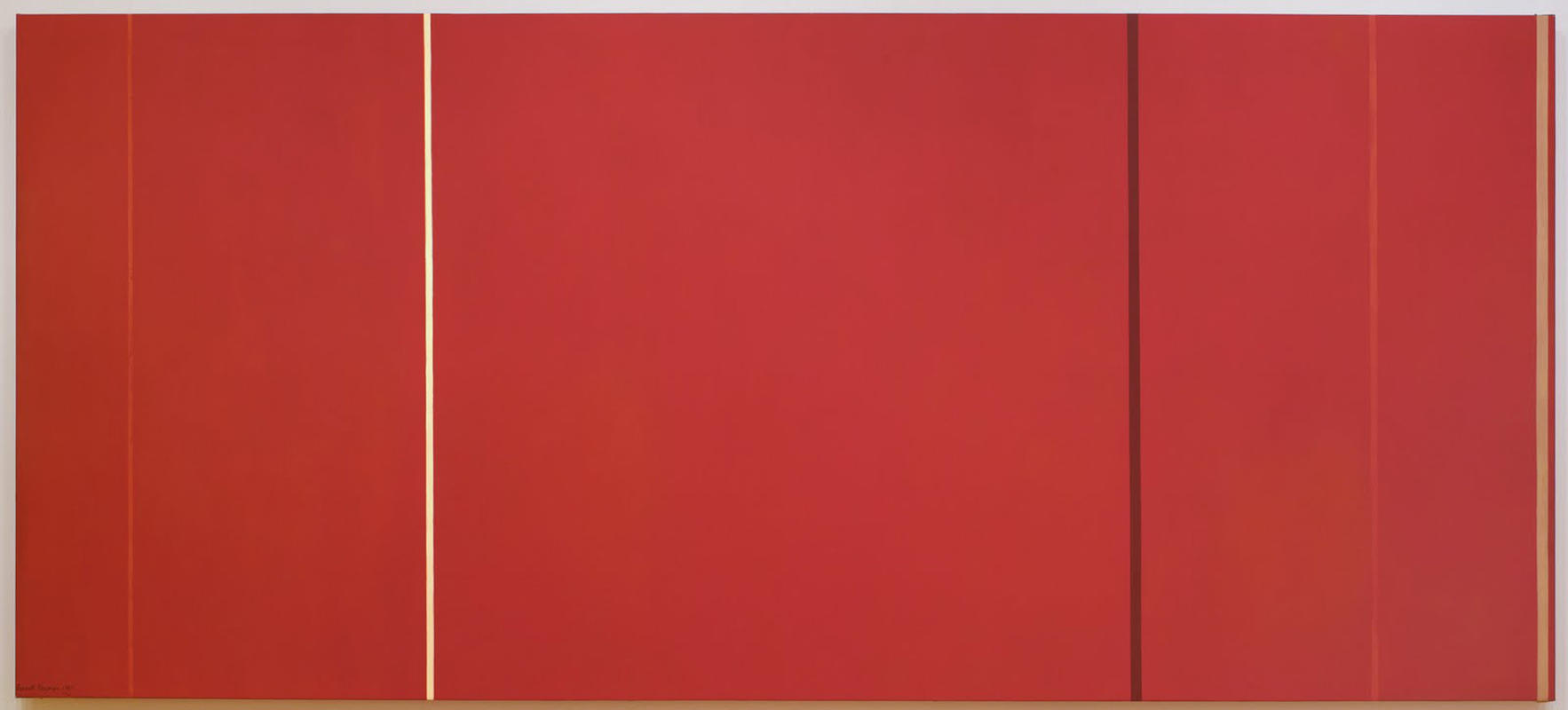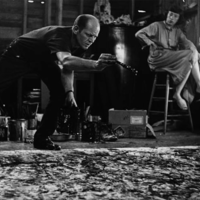More about Vir Heroicus Sublimis
- All
- Info
- Shop

Contributor
A surefire way to make Barnett Newman's restrained (i.e., boring?) color field paintings sound sexy? LATIN TITLES!
No one knows what they mean without googling them, but they make the painting sound so vintage and distinguished. This title means “sublime heroic man” – so, where is this stellar sample of the species? The devil is in the details: Those thin vertical lines you see could very well be a representation of the male ideal. Everyone knows that a straight, erect line in art is just another phallic symbol! But Newman calls them “zips” that supposedly energize the space. Hm. The phallus theory may be more exciting.
Though few have collapsed into a weeping mess (see tearjerkers by Mark Rothko) in front of these, Newman nonetheless intended for viewers to be more than just impressed by the big canvas size. It was supposed to be like meeting a new person and seeing into their soul...metaphysical, full of meaning, monumentally amazing, etc., etc.
Having seen this one up close and personal, I can’t compare to a run-in with my potential soulmate, but I have to say, the “zips” tend to create a tingle in one’s Netherlands. Not enough to unzip...but, still.
Featured Content
Here is what Wikipedia says about Vir Heroicus Sublimis
Vir Heroicus Sublimis is a 1951 painting by Barnett Newman, an American painter who was a key part of the abstract expressionist movement. Vir Heroicus Sublimis—"Man, Heroic and Sublime" in Latin—attempts to evoke a reaction from its viewers through its overwhelming scale (his largest canvas yet at the time he released it) and saturated color. The painting is part of the permanent collection of the Museum of Modern Art in New York City.
Check out the full Wikipedia article about Vir Heroicus Sublimis

















The way Newman uses lines to create this beautiful, striking contrast in his works highlights not only a divide of colors but also a divide of the material and spiritual world.